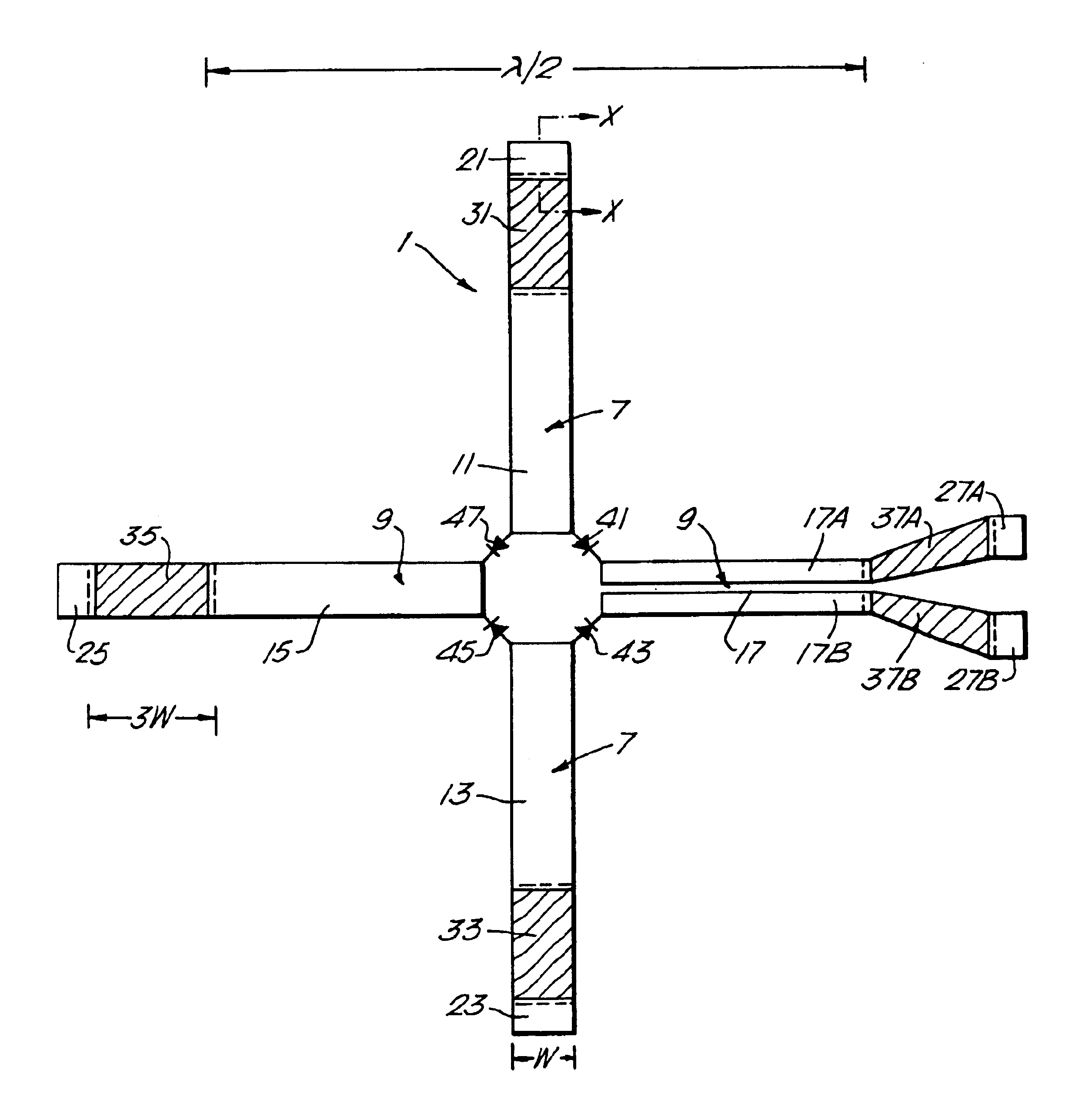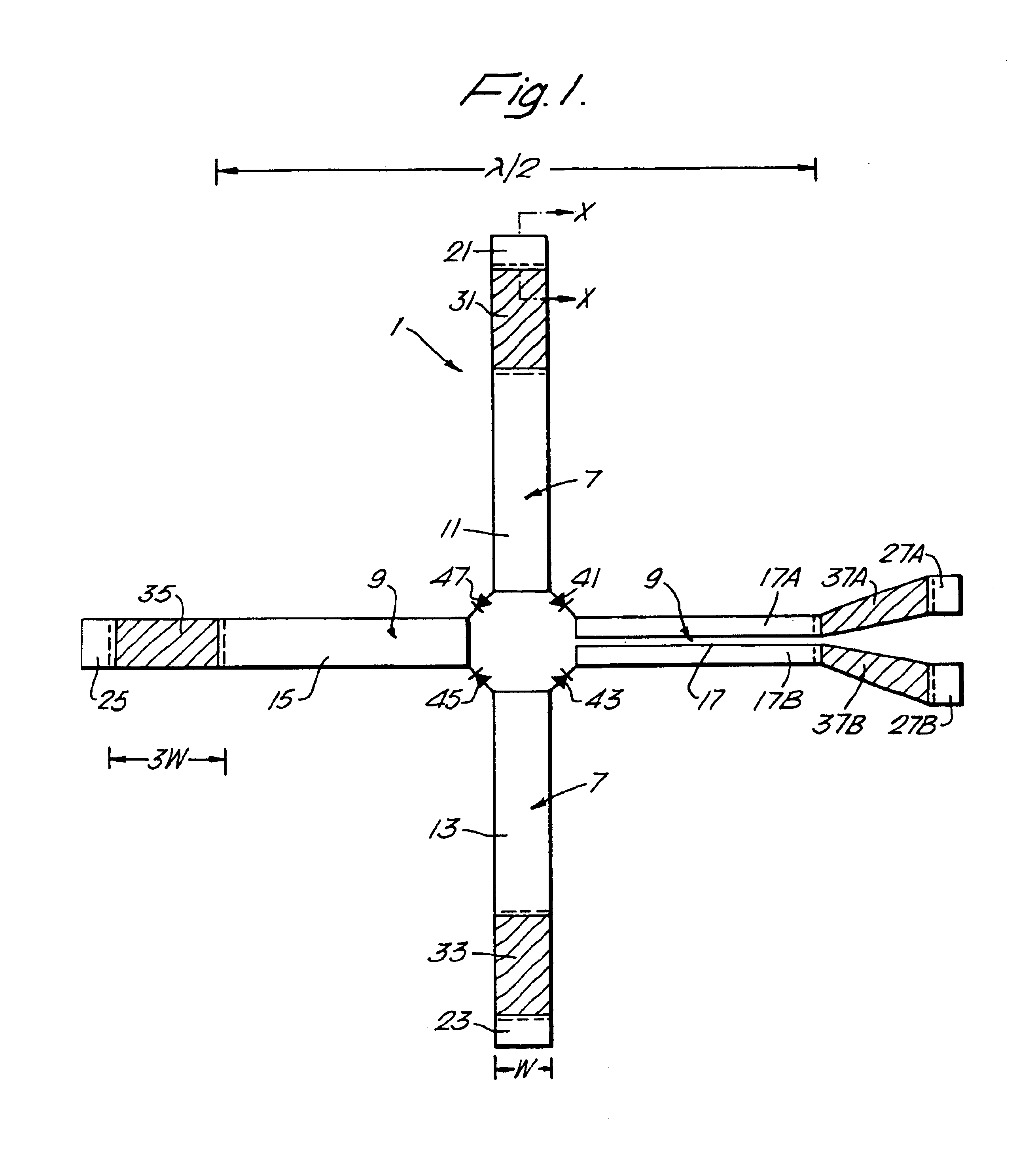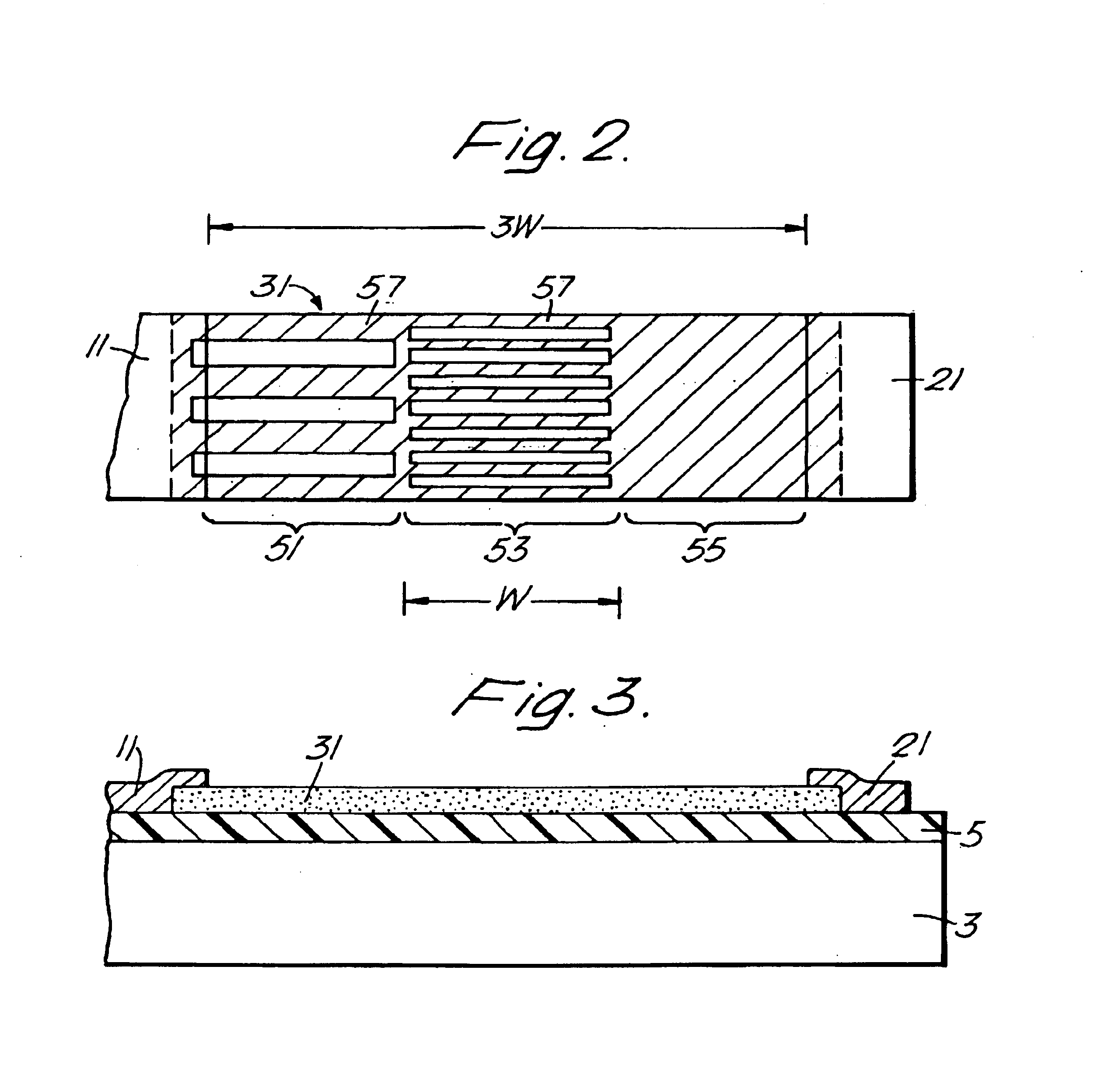Integrated antenna device with resistive connection
a resistive connection and antenna technology, applied in the direction of waveguide type devices, resonance antennas, radiating element structural forms, etc., can solve the problems of devices with good yield, achieve the effect of low resistivity, improve the effect of robustness and reproducibility, and reduce the resistance of the antenna
- Summary
- Abstract
- Description
- Claims
- Application Information
AI Technical Summary
Benefits of technology
Problems solved by technology
Method used
Image
Examples
Embodiment Construction
[0020]Embodiments of the invention will now be described, by way of example only, and with reference to the accompanying drawings.
[0021]In FIG. 1, the integrated antenna-receiver shown comprises a planar metal antenna 1 mounted on a supporting body 3, a substrate of semiconductor material, silicon. Insulation between the antenna metal and the semiconductor material is provided by a thin spacing layer 5 of dielectric material—thermally grown silicon dioxide. This prevents the formation of intermetallic compounds between the antenna and the semiconductor.
[0022]The planar metal antenna 1 comprises two orthogonal dipoles 7 and 9, each of which is defined by a pair of metal strip limbs—limbs 11, 13 and limbs 15, 17 respectively. One of the four limbs, limb 17, is divided along its length into two portions 17A and 17B. These portions 17A and 17B are isolated at low frequency, but at high frequency they are strongly coupled and behave together as a single limb. Corresponding to each limb t...
PUM
 Login to View More
Login to View More Abstract
Description
Claims
Application Information
 Login to View More
Login to View More - R&D
- Intellectual Property
- Life Sciences
- Materials
- Tech Scout
- Unparalleled Data Quality
- Higher Quality Content
- 60% Fewer Hallucinations
Browse by: Latest US Patents, China's latest patents, Technical Efficacy Thesaurus, Application Domain, Technology Topic, Popular Technical Reports.
© 2025 PatSnap. All rights reserved.Legal|Privacy policy|Modern Slavery Act Transparency Statement|Sitemap|About US| Contact US: help@patsnap.com



